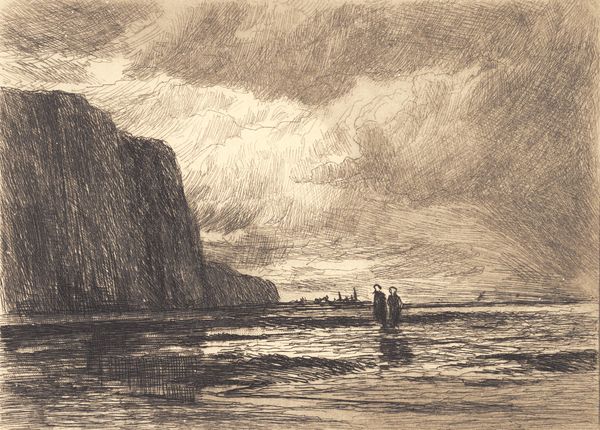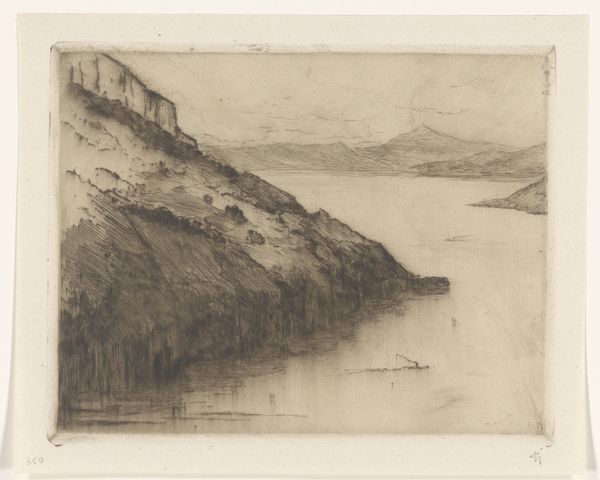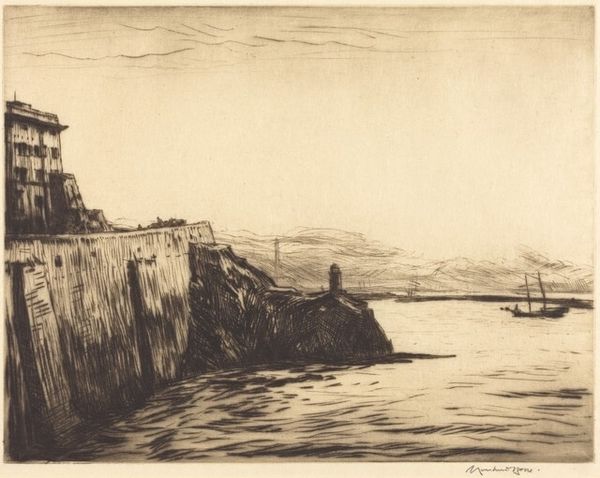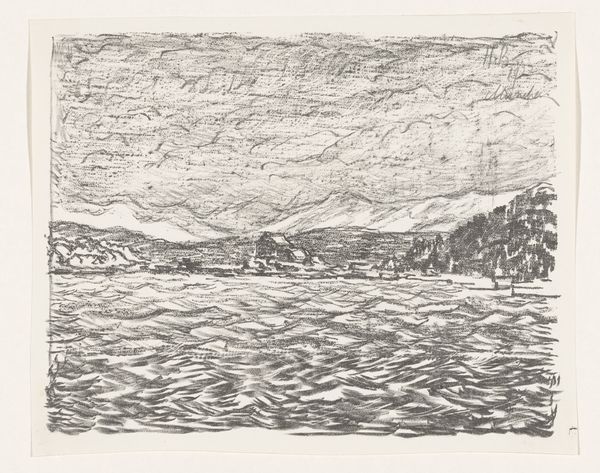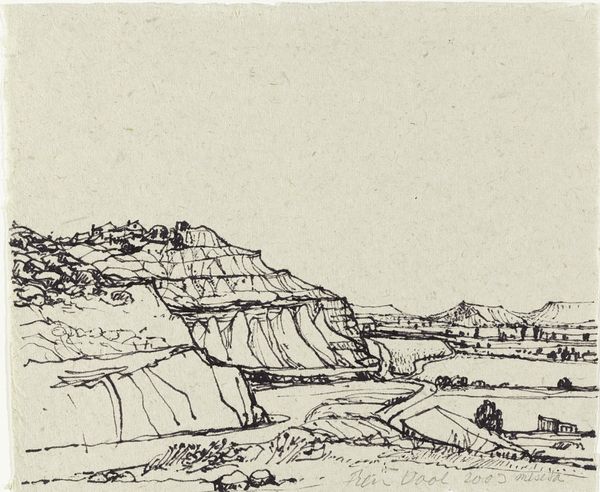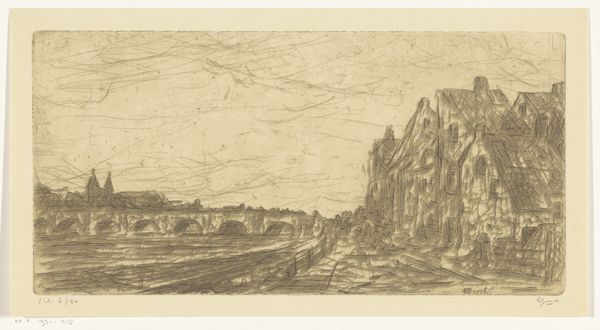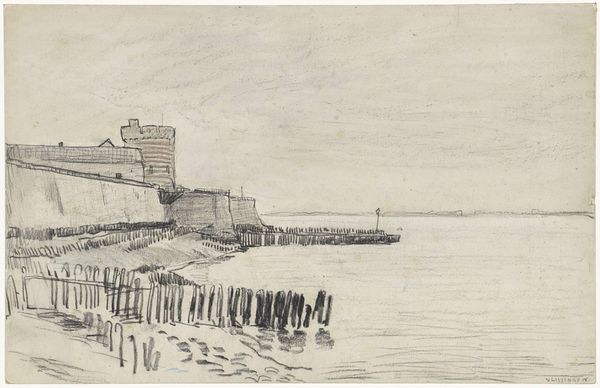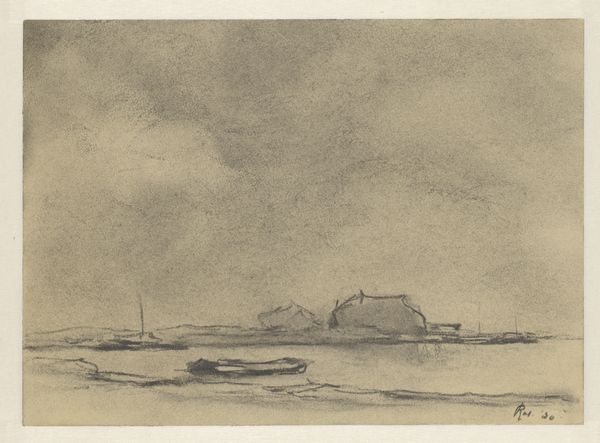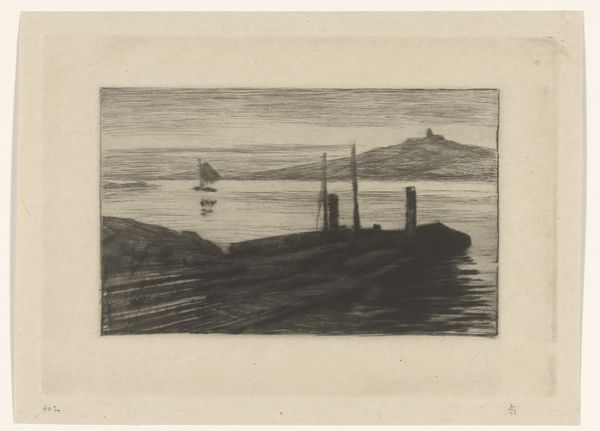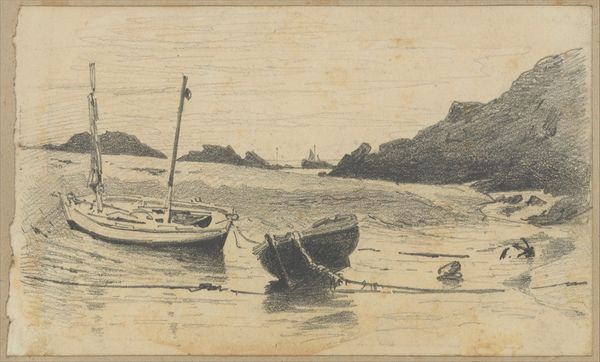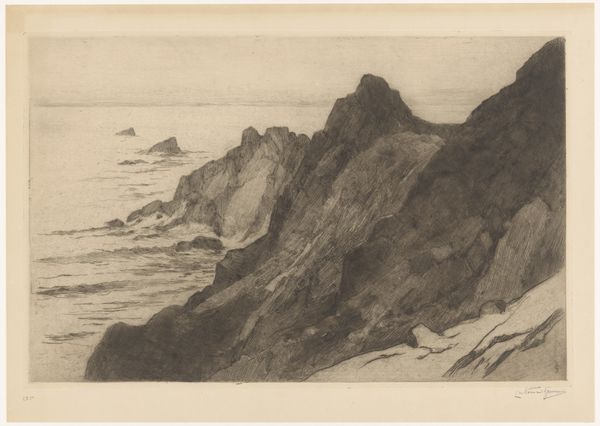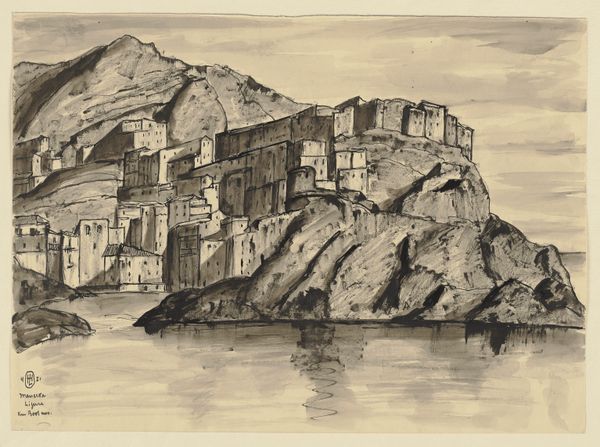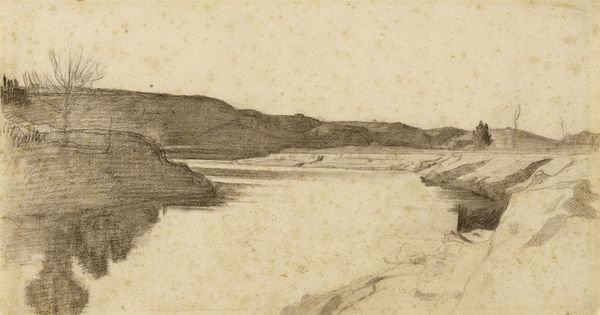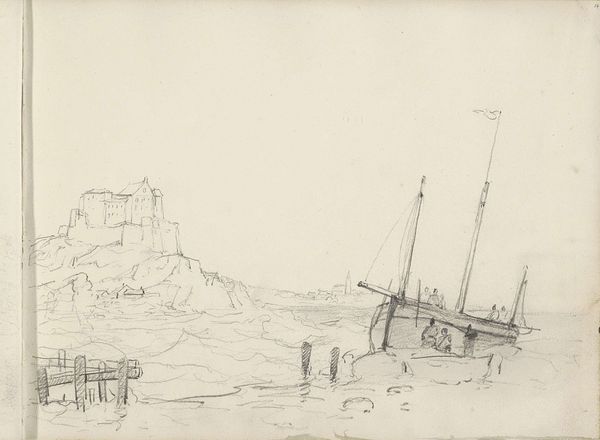
drawing, paper, pencil, chalk, graphite, charcoal
#
drawing
#
landscape
#
paper
#
pencil
#
chalk
#
graphite
#
charcoal
Copyright: Public Domain
Curator: Welcome. Before us is Ludwig von Hofmann's "Castle d'Ischia," held here at the Städel Museum. The piece, rendered in pencil, graphite, chalk, and charcoal on paper, captures a coastal scene with an imposing castle perched on a cliff. Editor: The first thing I notice is how solitary it feels, like a memory fading into the shore. That figure on the beach, gazing out at the water – are they longing for something, or saying goodbye? It’s haunting, in a gentle way. Curator: The setting of Ischia is interesting. Hofmann was drawn to Italy and classical antiquity, and the Mediterranean landscape became central to his artistic identity. We must consider the cultural appeal Italy held for German artists at the turn of the century, a search for light, for origins... Editor: Absolutely, but look at how he captures the light, almost orphic. I can smell the sea salt, hear the distant echoes of a fishing boat... Even just in monochrome, Hofmann breathes such tangible life into the place. The castle almost seems to grow organically out of the rock. Curator: Precisely. While appearing as an almost topographical study, the landscape conforms with the era's preoccupation for country idylls, far removed from the expanding industrial centers of Europe. Editor: Yes! But look how those darker marks and smudges around the edges frame everything. It's so evocative, this liminal space— that’s why I love working with sketches; the implied and incomplete is often so much more exciting than some polished oil painting. Curator: Hofmann offers us a vision of the past—both imagined and real— through the soft gradations achieved by his drawing, highlighting the symbolic associations Ischia had developed within a Western cultural-historical context. Editor: It reminds us, doesn't it? Everything—castle, coast, clouds, ourselves— is constantly eroding, reshaping, fading... Hofmann seems to have trapped that fleeting quality, which in turn can teach us how to approach the temporality of experience and life, maybe that’s just what hits me when looking at it. Thanks, Ludwig. Curator: A remarkable glimpse into both art history and the human experience.
Comments
No comments
Be the first to comment and join the conversation on the ultimate creative platform.
